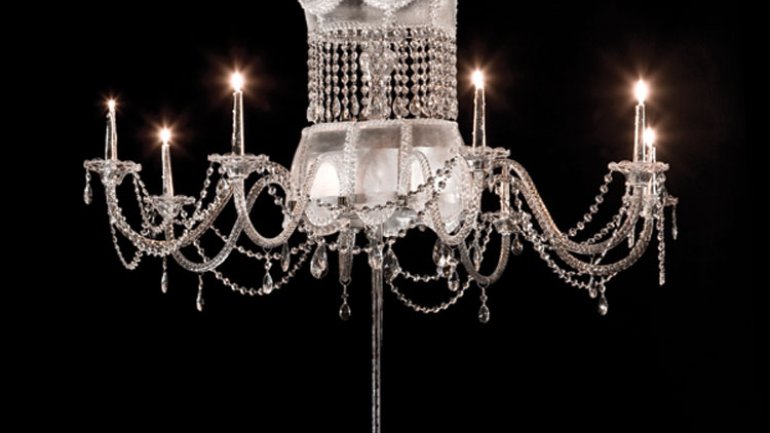Bonds of Glass
Bonds of Glass
Heller Gallery
Susan Taylor Glasgow: Love Hurts
New York, New York
September 12 – October 10, 2009
Susan Taylor Glasgow is known for her depictions of domestic bliss as little more than well-crafted illusion, so her transition from the comforts of needle and thread to the brittle brilliance of fire and glass is a statement in itself. Raised to cook and sew, the sculptor does both, but in a medium that is neither edible nor wearable.
Stitching together glass panels with ribbon and thread, she has fashioned toasters, bras and other feminine icons, such as Chandelier Dress. But in this show, Glasgow unhinges the concept to focus on insights she gained from working with homeless and abused women as an artist-in-residence at the Pittsburgh Glass Center. With their participation, she created The Communal Nest, a room-size take on avian domesticity. The willow branches nestled amid glass twigs suggest the last remnants of a telling substitution—the breakable for the pliable, the rigid for the flexible—conveying that home sweet durable home is a fragile place indeed. The glass-for-wood transposition offers clarity over opacity: you could see through this nest, past the facade of picket fences and manicured lives.
“Glasgow’s recent work has definitely adopted a more serious tone,” says gallery owner Douglas Heller. “Seeing women trapped in violent, destructive relationships has led her to profoundly alter her visual language.” In It’s Easy to Love the Rose, a work in Glasgow’s new series, a hand-linked glass chain connects a teapot that looks more like a weathered wineskin to a perfect little teacup. The piece illustrates Glasgow’s interpretation of a profound insight all parents probably wish their children understood: we are inextricably linked to the choices we make.
“Whomever people invite into their life dramatically shapes their future,” Glasgow says. “I’ve selected objects that have a natural domestic association and made one of the pair as beautiful as I could make it and the other as ugly, and then permanently bound them with glass chain. The enabler and the dependent. Abuser and victim. Purity of thought chained to constant self-doubt.” For an artist who usually ponders the lighter ironies of home life, imagining the anguish of a battered wife, must have been difficult. But though Glasgow works in a fantastical medium she is a realist at heart.
Mike Martin is a writer based in Columbia, Missouri.

